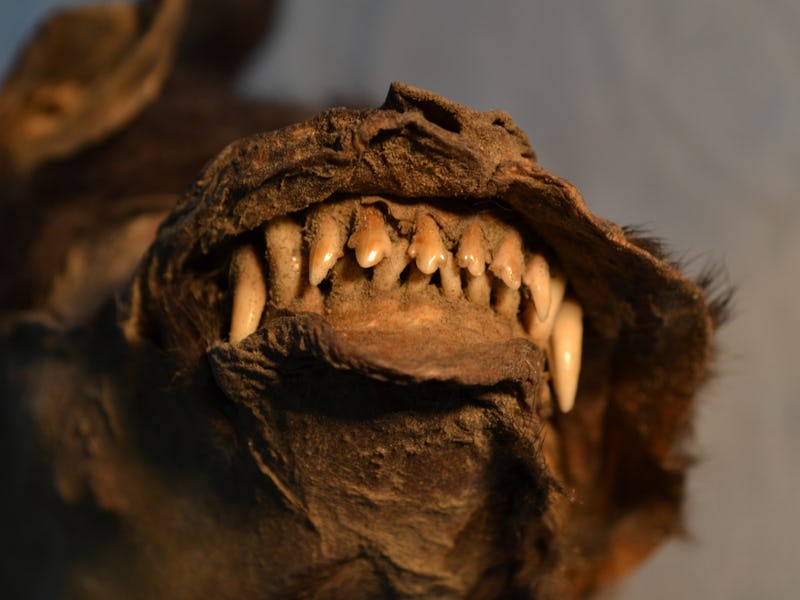
Puppies get into everything they shouldn't — from trash cans to your holiday dinner. Ice Age pups are no exception.
In a study published this summer, researchers discovered a clue to these ancient dogs' lives, hidden inside the stomach of a mummified pup — a chunk of woolly rhino.
The discovery of a well-preserved animal sample inside another animal is as gnarly as it is rare. The finding enables scientists to better understand what the predator-prey dynamics between these ancient creatures might've looked like. It also prompts questions entirely new to science, like: how did a puppy take down a rhino?
INVERSE IS COUNTING DOWN THE 20 STORIES THAT MADE US SAY 'WTF' IN 2020. THIS IS NUMBER 14. SEE THE FULL LIST HERE.
A reconstruction of what the woolly rhino would have looked like.
The discovery was announced in August in the journal Current Biology. It came as part of a larger study looking at how climate change affected Ice Age fauna. During this research, scientists discovered a mummified Ice Age puppy, named Tumat after the Siberian location he was found in.
Edana Lord, a postgraduate student at the Centre for Paleogenetics and first author on the study, recounted to Inverse at the time how shocked the researchers had been to discover a hidden artifact inside Tumat's belly. In the past, the remains of plants have been found in stomachs of preserved ancient creatures — but another preserved creature?
"As far as we know, it is very unusual to find tissue from another animal preserved in the stomach," Lord says.
A frozen rhino snack found inside an ice age puppy.
In fact, these samples were so well preserved, the team was able to genetically analyze both Tumat and his woolly rhino snack. The reason why they were so intact is because they were encased in permafrost — a subsurface layer of soil in polar regions that stays frozen year-round. Lord says this soil acts like a giant freezer.
Tumat appears to have met an untimely demise after is rhino snack, perhaps even falling into a snowy crevice and being buried by snow.
While disastrous for Tumat, the cold essentially mummified Tumat's body, allowing today's scientists to learn about the dog's life and times thousands of years after it lived. Intact fur and skin samples like this are especially useful for genetic analysis, Lord tells Inverse, because they provide more DNA for sampling.
Using this information, scientists can begin to piece together what Tumat's life may looked like. For example, Tumat could have been part of a large scavenging pack that hunted big game like wooly rhinos, Lord speculates.
The grin of Tumat, an ice age puppy found in permafrost.
"Working on these sorts of specimens gives us a better understanding of what the Ice Age animals looked like [compared to their modern counterparts]," Lord says.
"This allows us to ask a whole host of questions regarding their population and evolutionary history."
INVERSE IS COUNTING DOWN THE 20 STORIES THAT MADE US SAY 'WTF' IN 2020. THIS IS NUMBER 14. Read the original story here.